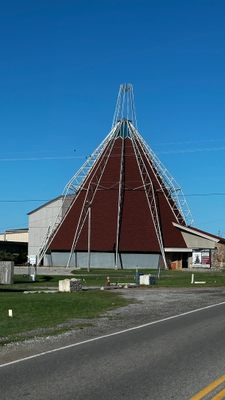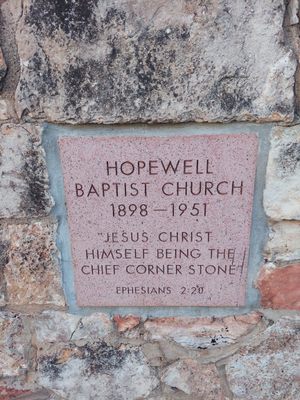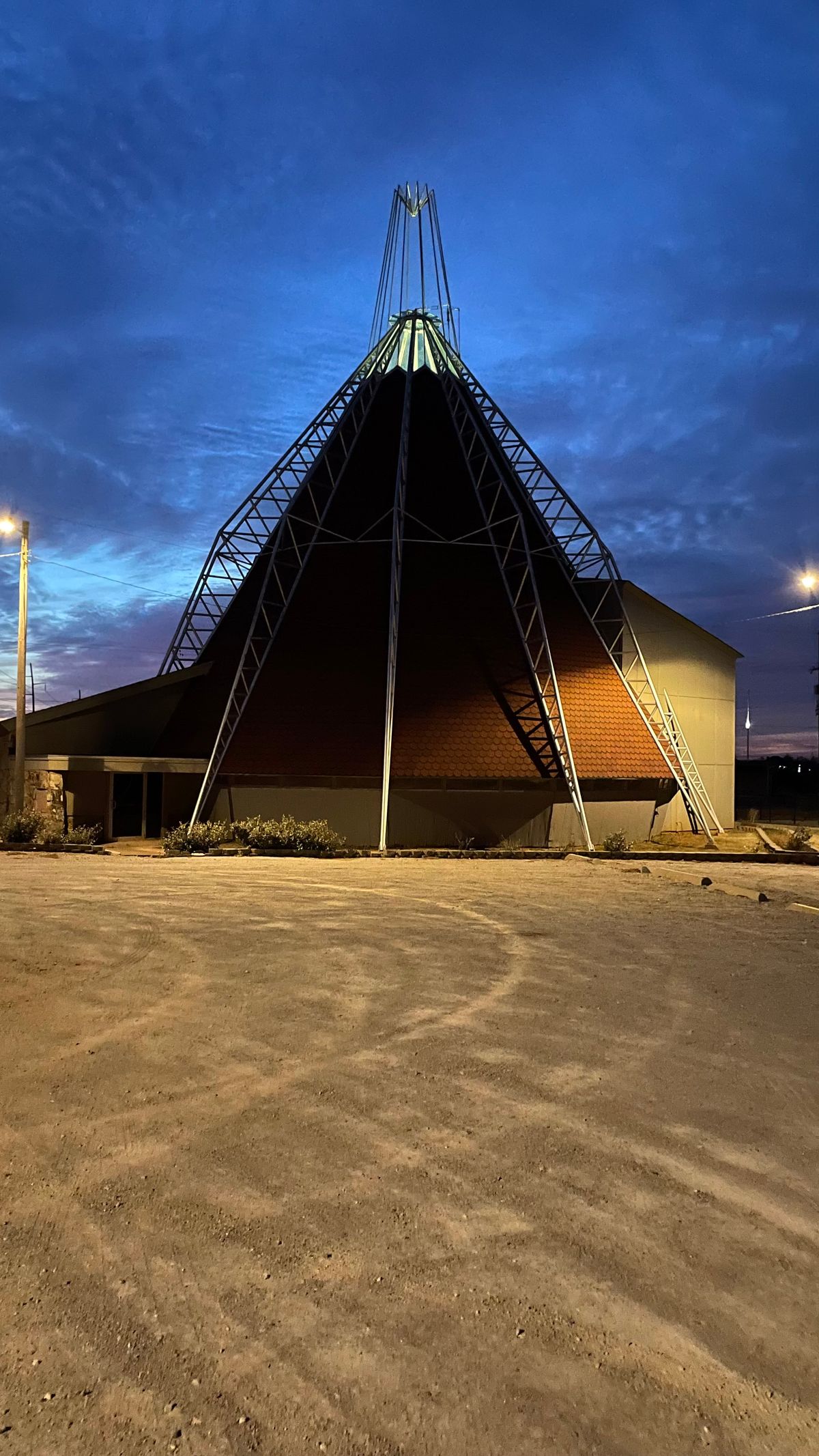About
Architect Bruce Goff was a master at turning found materials into unexpected architectural forms, and in that regard Hopewell Baptist Church may be his most transformative work.
The church was completed in the 1950s in what was then rural space just outside of Edmond, Oklahoma. The congregation of the church worked in the oil fields, and it was excess oil drilling materials that were used to build the modernist church. Drill pipes come up on all sides of the exterior, while inside creative materials like pie tins were incorporated as lighting fixtures.
The congregation build the church themselves after Goff's design through volunteer work. Inside a conical ceiling soars up with an oculus opening where light streamed down, originally through dangling glass. Due to its resemblance to an American Indian teepee, the church became known as the "Teepee Church," neatly fusing the oil field and tribal heritage of the area. Time magazine even featured the little church in a 1955 issue as an example of the forward-thinking organic architecture being imagined on the Plains.
However, due to maintenance issues the church was abandoned in the 1980s and the congregation moved into a less striking structure next door. But they still hope to repair the leaks and structural issues of the church, and in 2014 the Hopewell Baptist Church got a new roof with more renovations planned through funds from a private donor.
Related Tags
Know Before You Go
The church is located in a mix of suburban sprawl and countryside. From I-35, take the 2nd Street exit and continue west on 2nd Street/Edmond Rd. for 11.5 miles.
Community Contributors
Added By
Published
January 11, 2014
Sources
- http://allezallie.wordpress.com/2012/03/07/hopewell-baptist-church/
- http://newsok.com/old-hopewell-church-in-northwest-oklahoma-county-has-new-roof/article/3922997
- http://www.abandonedok.com/hopewell-baptist-church/
- http://okcmod.com/?page_id=832
- http://newsok.com/article/3696656
- http://pdfhost.focus.nps.gov/docs/NRHP/Text/02001018.pdf








































































